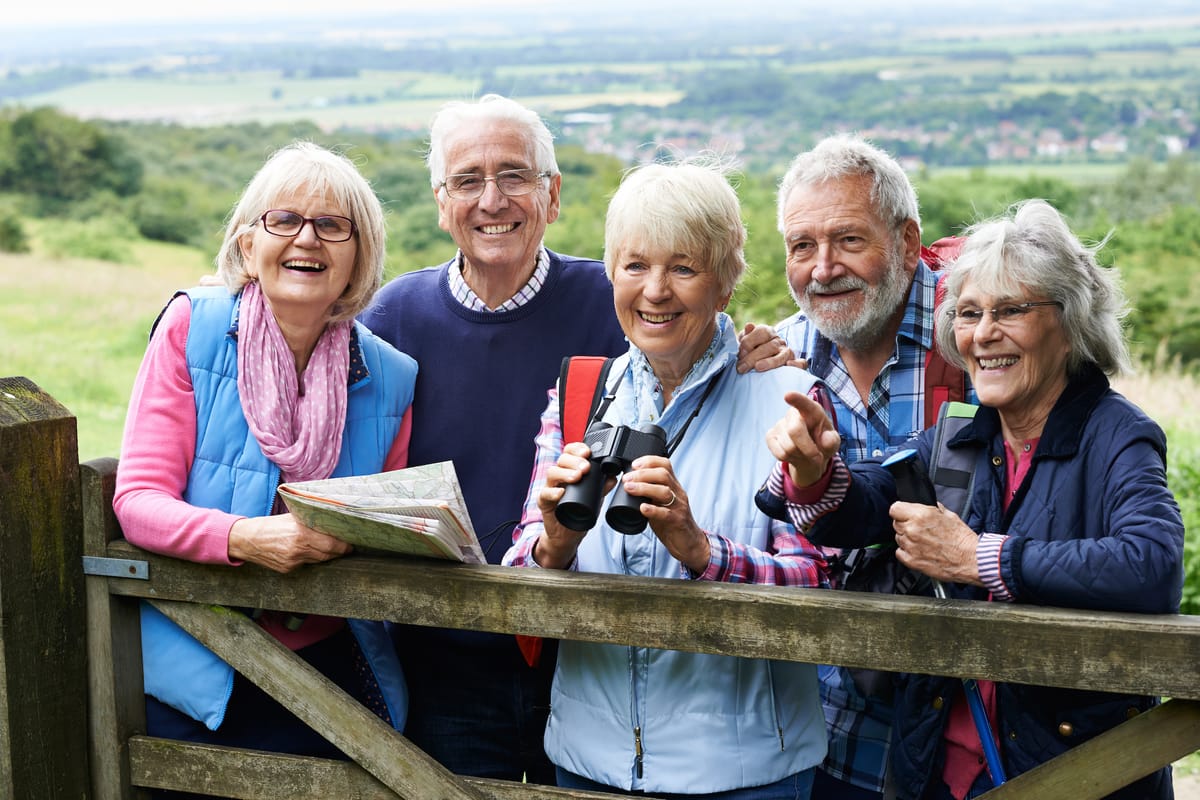

Embarking on Your Birding Adventure
Birding, or bird watching, is an enchanting hobby that connects you with nature in a profound way. It's an opportunity to step away from the hustle and bustle of everyday life and immerse yourself in the serene beauty of the natural world. Whether you're strolling through your local park or exploring distant wilderness areas, birding allows you to witness the incredible diversity of avian life. From the vibrant colors of a cardinal to the majestic flight of an eagle, each bird offers a unique glimpse into the wonders of our planet.
Getting started with birding doesn't require a lot of equipment or expertise. All you need is a keen interest in nature and a willingness to learn. As you begin your birding journey, you'll discover that it's not just about identifying different species; it's about appreciating their behaviors, songs, and habitats. You'll find joy in the quiet moments of observation, the thrill of spotting a rare bird, and the satisfaction of contributing to citizen science by recording your sightings. Birding is a hobby that enriches your life and deepens your connection to the natural world.
Essential Birding Gear for Beginners
When you're starting out as a birder, the right gear can make a significant difference in your experience. The most essential piece of equipment is a good pair of binoculars. Look for binoculars with a magnification of 8x or 10x and an objective lens diameter of 42mm for the best balance of brightness and clarity. A comfortable neck strap and a durable, waterproof design are also important features to consider. Binoculars allow you to get a closer look at birds without disturbing them, enhancing your ability to identify and appreciate them.
In addition to binoculars, a field guide is another crucial tool for any birder. A good field guide provides detailed illustrations or photographs of birds, along with information on their identification, habitat, and behavior. Choose a guide that covers the region you'll be birding in, and consider a digital version for easy access in the field. A notebook and pen are also handy for recording your observations, including the date, location, and any notable behaviors or calls you witness. As you progress in your birding journey, you may also want to invest in a camera to capture the beauty of the birds you encounter.
Identifying Common Backyard Birds
One of the easiest ways to start birding is by observing the birds in your own backyard. Many common species can be found in suburban and urban areas, making it convenient to begin your birding journey close to home. Some of the most frequently seen backyard birds include the American robin, the northern cardinal, and the blue jay. These birds are relatively easy to identify due to their distinctive colors and behaviors.
To identify these common birds, pay attention to their size, shape, color, and behavior. The American robin, for example, is a medium-sized bird with a reddish-orange breast and a dark head. It's often seen hopping on lawns, searching for worms. The northern cardinal is a striking bird with a bright red body and a distinctive crest on its head. Males and females can be easily distinguished by their colors, with males being red and females being a more subdued brown. The blue jay is a larger bird with a blue body, white underparts, and a bold crest. It's known for its loud calls and bold behavior, often seen at bird feeders.
Exploring Birding Hotspots
Once you've become familiar with the birds in your backyard, you may want to venture out to birding hotspots in your area. These locations are known for their high diversity and abundance of bird species, making them ideal for birders of all skill levels. National and state parks, wildlife refuges, and nature reserves are often excellent places to start. Many of these areas have designated trails and observation points that make it easy to spot and enjoy birds.
Before heading out to a birding hotspot, do some research to find out which species are commonly seen in the area and what time of year is best for birding. Some hotspots may be particularly good for migratory birds, while others may be known for their resident populations. Bring along your binoculars, field guide, and notebook to make the most of your visit. Be sure to respect the natural environment and follow any rules or guidelines in place to protect the birds and their habitats. Birding hotspots offer a wonderful opportunity to expand your birding experience and connect with other birders who share your passion.
Understanding Bird Behavior and Calls
One of the most rewarding aspects of birding is learning about the behavior and calls of different bird species. Birds exhibit a wide range of behaviors, from feeding and nesting to courtship and migration. Observing these behaviors can provide valuable insights into their lives and help you identify them more easily. For example, some birds, like woodpeckers, are known for their distinctive drumming on trees, while others, like hummingbirds, hover in mid-air to feed on nectar.
Bird calls and songs are another important aspect of birding. Each species has its own unique vocalizations, which can be used for communication, mating, and territorial defense. Learning to recognize these calls can greatly enhance your birding experience and help you locate birds that might be hidden from view. Many field guides include descriptions and recordings of bird calls, and there are also apps available that can help you identify birds by their songs. By paying attention to both behavior and calls, you'll gain a deeper appreciation for the fascinating world of birds.
Joining Birding Communities and Clubs
Birding is a hobby that can be enjoyed alone, but joining a birding community or club can enhance your experience and provide valuable opportunities for learning and socializing. Many areas have local birding clubs that organize regular outings, workshops, and events. These clubs are a great way to meet other birders, share your experiences, and learn from more experienced members. Some clubs also participate in citizen science projects, allowing you to contribute to important research on bird populations and habitats.
Online birding communities are another excellent resource for beginners. Websites and forums dedicated to birding offer a wealth of information, from identification tips and birding hotspots to equipment reviews and photography advice. Social media platforms also have active birding groups where you can share your sightings, ask questions, and connect with birders from around the world. By joining a birding community or club, you'll find support, inspiration, and a sense of camaraderie as you explore the enchanting world of birds.
Contributing to Citizen Science
As a birder, you have the opportunity to contribute to important scientific research through citizen science projects. These projects rely on the observations and data collected by amateur birders to monitor bird populations, track migration patterns, and study bird behavior. One of the most well-known citizen science projects is the Christmas Bird Count, which takes place annually across North America. During this event, volunteers count the number of birds they see in a specific area, providing valuable data on bird populations and distribution.
Other citizen science projects include eBird, a global database where birders can submit their sightings and contribute to real-time data on bird distribution and abundance. Project FeederWatch is another popular project that involves monitoring birds at feeders during the winter months. By participating in these projects, you can make a meaningful contribution to the conservation of birds and their habitats. Citizen science not only enhances your birding experience but also helps scientists and conservationists better understand and protect our avian friends.
Photographing Birds: Tips and Techniques
Photography is a wonderful way to capture the beauty and diversity of birds and enhance your birding experience. Whether you're using a dedicated camera or a smartphone, there are several tips and techniques that can help you take better bird photos. First, invest in a camera with a good zoom lens to get close-up shots without disturbing the birds. A tripod can also be helpful for stabilizing your camera and reducing blur, especially when photographing birds in flight.
When taking bird photos, pay attention to lighting and composition. Early morning and late afternoon are the best times for bird photography, as the soft, warm light enhances the colors and details of the birds. Try to position yourself so that the light is behind you, illuminating the bird's features. For composition, consider the rule of thirds, placing the bird off-center to create a more dynamic and interesting photo. Be patient and observant, waiting for the perfect moment to capture a bird in action or displaying its unique behaviors. With practice and patience, you'll be able to take stunning photos that showcase the beauty of the birds you encounter.
Conservation and Ethical Birding Practices
As a birder, it's important to practice ethical birding and contribute to the conservation of birds and their habitats. Ethical birding involves respecting the birds and their environment, minimizing your impact, and following guidelines to protect wildlife. Some key principles of ethical birding include keeping a safe distance from birds to avoid disturbing them, staying on designated trails, and not removing or disturbing nests, eggs, or feathers.
Conservation efforts are crucial for the survival of many bird species, and birders can play an active role in these efforts. Support conservation organizations that work to protect birds and their habitats, and participate in local conservation projects, such as habitat restoration and bird-friendly gardening. By practicing ethical birding and supporting conservation, you can help ensure that future generations can enjoy the beauty and diversity of birds.
The Joy of Lifelong Birding
Birding is a hobby that can bring joy and fulfillment throughout your life. As you continue to explore the enchanting world of birds, you'll discover new species, learn about their behaviors and habitats, and develop a deeper appreciation for the natural world. Birding provides endless opportunities for learning, exploration, and connection, whether you're birding in your backyard or traveling to distant birding hotspots.
The joy of birding comes from the moments of awe and wonder as you witness the beauty and diversity of birds. It's the thrill of spotting a rare bird, the satisfaction of identifying a new species, and the peace and tranquility of being immersed in nature. Birding is a hobby that enriches your life, deepens your connection to the natural world, and provides a sense of purpose and fulfillment. Embrace the joy of lifelong birding and let it inspire you to explore, learn, and appreciate the wonders of the avian world.
Celebrating the Wonders of Birding
As you embark on your birding journey, take time to celebrate the wonders of the avian world. Each bird you encounter offers a unique glimpse into the beauty and diversity of nature. From the vibrant colors of a cardinal to the graceful flight of a heron, birds captivate us with their beauty and behaviors. Birding allows you to connect with nature in a profound way, fostering a sense of awe and appreciation for the natural world.
By exploring the enchanting world of birds, you'll discover new species, learn about their habitats and behaviors, and develop a deeper understanding of the interconnectedness of all living things. Birding is a hobby that enriches your life, providing opportunities for learning, exploration, and connection. Whether you're birding in your backyard or venturing to distant hotspots, the joy of birding is a lifelong journey that brings fulfillment and wonder. Embrace the beauty of birds and let their enchanting world inspire you to explore, learn, and appreciate the wonders of nature.

Dues are $12 per year. Member benefits:
✅ Ad-Free Website Viewing
✅ Advocacy for Republican Seniors
✅ 120+ Senior Discounts
✅ Member Only Newsletters